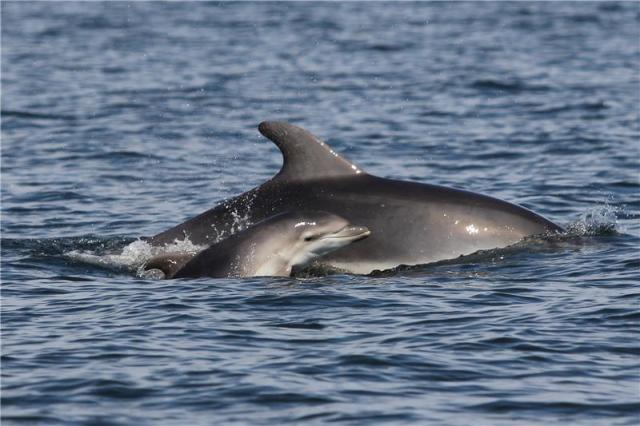Dec 15 2014
The rise in tourism, fishing and sea transport between the Iberian Peninsula and the Balearic Islands is compromising the wellbeing of a small population of common bottlenose dolphins living in coastal waters off the Pityusic Islands. This is the conclusion of a study led by the University of Barcelona (Spain), which has, for the first time, counted these mammals in summer and spring, which are crucial seasons for them.
 Conflicts with fishers cause 30 to 60 dolphin deaths a year in the area./ Credit: Joan Gonzalvo
Conflicts with fishers cause 30 to 60 dolphin deaths a year in the area./ Credit: Joan Gonzalvo
Despite being one of the most common cetaceans in the Mediterranean Ocean, the common bottlenose dolphin (Tursiops truncatus) resides in areas close to human beings, and is thus subject to continual conflicts - so much so that in 2006, the International Union for Conservation of Nature (IUCN) declared the subpopulation of this species in the Mediterranean 'vulnerable' after it had decreased by 30% in the preceding 60 years.
As Joan Gonzalvo, a scientist at the University of Barcelona's (UB) Institute for Research on Biodiversity, explains to SINC: "Anthropogenic activities such as fishing, coastal development, tourism and maritime transport, especially in summer, are some of the threats faced by dolphins in the Balearic Islands."
Gonzalvo is the main author of a study that evaluated the abundance of these cetaceans over three years, as well as movement patterns between the islands and their group dynamic. The results, published in the 'Journal of the Marine Biological Association of the United Kingdom', estimates that there are 517 dolphins inhabiting this area of the Mediterranean.
The Pityusic Islands are considered a refuge for marine species, especially this population of bottlenose dolphins - probably one of the largest in Spain. However, the study demonstrates that the total number of these sea mammals is smaller than previously thought. "It may not be more than a few hundred," the researcher says.
The team drew up a series of dolphin distribution maps based on sightings between 2002 and 2004. "Most sightings were in summer and spring, when the dolphins could have been avoiding coastal waters due to the growing number of boats and ships and greater human presence," Gonzalvo reasons.
Danger point
The high degree of loyalty dolphins show to their habitat and relatively limited mobility across the archipelago forces them to reside in an area where overfishing, habitat degradation, tourist boat disturbance and an ever-growing fishing industry are a modern-day reality.
According to previous studies, conflicts with fishers cause 30 to 60 dolphin deaths a year in the area. "The animals play around the nets to take the caught fish and risk getting trapped," the scientist comments. Additionally, in order to avoid loss of fishing profits, fishers take drastic measures; attacks on dolphins - and even dolphin deaths - are common.
The Balearic Islands have over 400 handcrafted boats, more than 60 trawlers, three longline fishing boats and 11 seiners, so interaction with dolphins is common. But fishing is not the only threat.
Sea traffic has increased considerably in the archipelago. According to the Tourism Council for the Balearic Islands, 69 ports currently offer 20,488 anchoring spots over the islands.
Crashing into boats
The risk of boats and ships colliding with dolphins and noise disturbance from maritime traffic - which affects the behaviour of these mammals - have become a cause for concern.
Added to this is the pollution, which is higher than in other areas. "The concentrations of organochlorine compounds found in these dolphins are very high, even more so than in any other dolphin species," Gonzalvo highlights, adding that the concentrations vastly exceed accepted limits for mammals.
For all these reasons, the researchers call for urgent action in terms of managing sustainable fishing, mitigating interaction between fishers and dolphins, prevention of sea pollution and controlling tourism - especially boat and ship traffic - to ensure the preservation of this fragile population of bottlenose dolphins. "Conservation measures are needed beyond those already in place," he concludes.